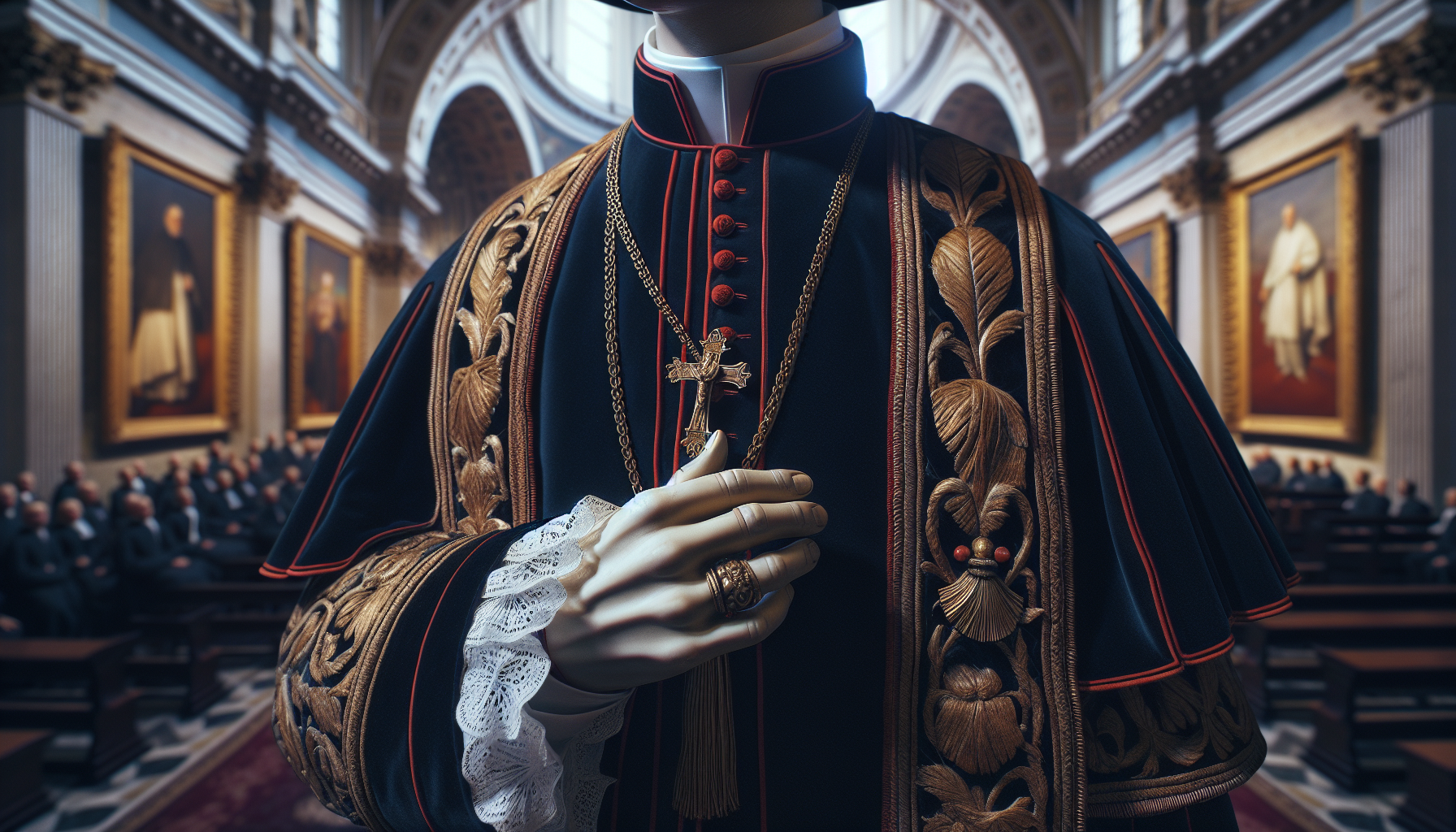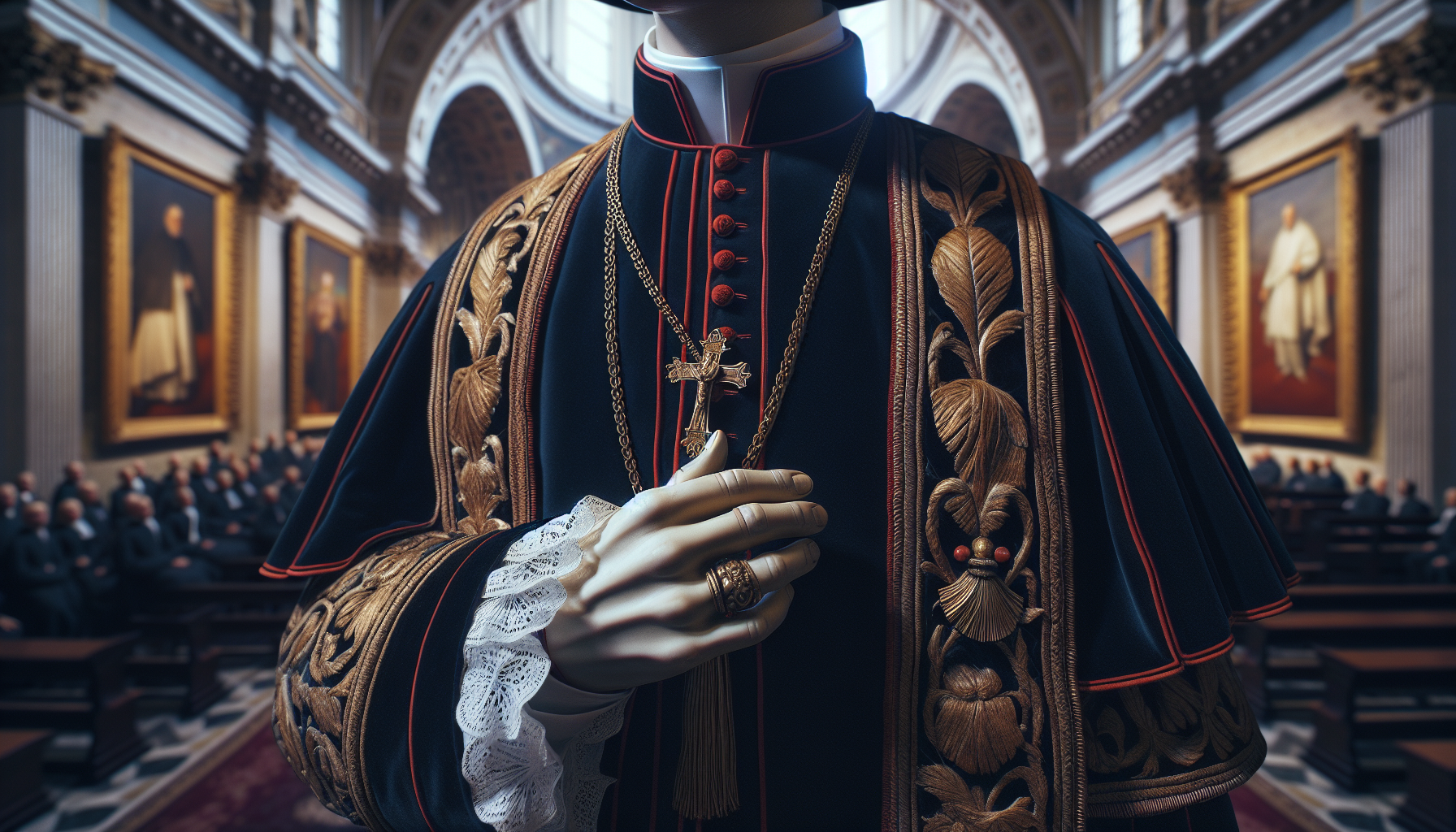
Fashion choices of Pope Leo XIV
Pope Leo XIV has become a notable figure not only for his spiritual leadership but also for his distinctive fashion choices. His attire has sparked conversations worldwide, as he blends modern sensibilities with historical papal garments. Known for his keen eye for detail, Pope Leo XIV often opts for garments that reflect a deep respect for the traditions of the Catholic Church while also incorporating contemporary elements.
One of the most striking aspects of his wardrobe is his preference for vibrant colors and intricate embroidery, which harken back to the Renaissance period. His choice of fabrics, often rich and luxurious, signifies a nod to the opulence of past papacies. The Pope’s cassocks are frequently adorned with elaborate patterns, and he is often seen wearing a variety of mitres that showcase both traditional and modern designs.
Pope Leo XIV’s sartorial decisions extend beyond mere aesthetics; they are a deliberate expression of his vision for the Church. By choosing to wear garments that reflect both the past and the present, he communicates a message of continuity and renewal. His fashion choices have not only revived interest in papal attire but have also inspired discussions about the role of tradition in contemporary religious practice.
Traditional elements revisited
Pope Leo XIV’s fashion selections have brought a renewed focus on traditional elements of papal attire, reintroducing garments and accessories that have historical significance. Among these are the camauro, a red velvet cap trimmed with white ermine, which was commonly worn by popes in the Middle Ages and Renaissance. This headpiece, once a staple of papal winter attire, has made a comeback under Pope Leo XIV, symbolizing a return to the roots of papal fashion.
Another traditional element that Pope Leo XIV has embraced is the fanon, a shoulder cape worn over the chasuble during liturgical ceremonies. The fanon, with its distinctive stripes of gold and white silk, was a regular feature of papal vestments until it fell out of use in the late 20th century. By reintroducing the fanon, Pope Leo XIV not only pays homage to the rich history of the Church but also emphasizes the continuity of its liturgical traditions.
The Pope has also revived the use of the papal tiara, a bejeweled crown that was last worn regularly in the mid-20th century. While not used in official ceremonies, the tiara’s presence in Pope Leo XIV’s wardrobe serves as a powerful symbol of the papacy’s enduring legacy. Its reappearance has sparked interest and debate among historians and theologians, highlighting the balance between tradition and modernity in the Church’s evolving identity.
These traditional elements, carefully selected and reintroduced by Pope Leo XIV, reflect his commitment to honoring the past while engaging with the present. His choices invite the faithful to explore the historical depths of the Church’s sartorial heritage, fostering a deeper appreciation for the symbols and rituals that have shaped Catholic identity over the centuries.
Impact on the Vatican community
Pope Leo XIV’s fashion choices have had a profound impact on the Vatican community, influencing both the clergy and laypeople within the Church. His deliberate incorporation of traditional elements into his attire has sparked a renewed interest in the historical significance of papal garments among Vatican officials. Many members of the clergy have expressed admiration for the Pope’s ability to blend the old with the new, seeing it as a reflection of the Church’s mission to remain relevant while staying true to its roots.
The Pope’s sartorial decisions have also encouraged a broader conversation about the role of tradition in the modern Church. By reintroducing garments like the camauro and the fanon, Pope Leo XIV has prompted discussions among theologians and historians about the importance of preserving liturgical customs. This dialogue has extended beyond the Vatican, reaching Catholic communities worldwide who are eager to explore the rich tapestry of their religious heritage.
Within the Vatican, Pope Leo XIV’s fashion sense has inspired a subtle shift in how ceremonial attire is perceived and utilized. Clergy members have begun to embrace more traditional vestments during liturgical celebrations, seeing them as a means to connect more deeply with the Church’s history. This shift has fostered a sense of unity and continuity, reinforcing the idea that the Church’s past is an integral part of its present and future.
Moreover, the Pope’s fashion choices have had a unifying effect on the Vatican community, bridging generational gaps and fostering a shared appreciation for the Church’s cultural legacy. Younger members of the clergy, in particular, have found inspiration in Pope Leo XIV’s approach, viewing it as a call to engage with the Church’s traditions in a meaningful and contemporary way. This renewed interest in traditional papal attire has not only enriched the spiritual life of the Vatican but has also strengthened the bonds between its members, creating a more cohesive and vibrant community.
Fashion choices of Pope Leo XIV
Pope Leo XIV has become a captivating figure in the fashion world, drawing attention with his distinctive sartorial choices that blend tradition with a modern twist. His wardrobe selections have sparked conversations not only within the Vatican but also across global fashion circles, including here in Australia.
Known for his keen eye for detail, Pope Leo XIV has embraced a style that pays homage to the rich history of papal attire while infusing it with contemporary elements. His preference for luxurious fabrics and intricate embroidery reflects a deep appreciation for craftsmanship, reminiscent of haute couture.
One of the most talked-about aspects of his fashion choices is his use of colour. While traditional papal garments are often associated with white and red, Pope Leo XIV has introduced a palette that includes deep blues and rich purples, adding a regal touch to his appearances. This bold use of colour not only signifies authority but also resonates with the fashion-forward audience.
Accessories play a crucial role in his ensembles, with each piece carefully selected to complement his overall look. From ornate mitres to elegantly designed stoles, these accessories are not merely decorative but serve as symbols of his papal duties and responsibilities.
His footwear choices have also garnered attention, with a preference for custom-made shoes that combine comfort with style. These shoes, often crafted by skilled artisans, highlight the importance of quality and attention to detail, values that resonate deeply within the fashion industry.
In a world where fashion often leans towards the avant-garde, Pope Leo XIV’s choices remind us of the timeless elegance found in tradition. His ability to seamlessly blend the old with the new offers a refreshing perspective, inspiring fashion enthusiasts and designers alike to explore the beauty of heritage in modern attire.
Revival of traditional papal attire
Pope Leo XIV’s revival of traditional papal attire has been nothing short of a sartorial renaissance, captivating the fashion world with its nod to history and elegance. His approach to papal fashion is a masterclass in blending the revered styles of past pontiffs with a contemporary flair that speaks to today’s fashion-conscious audience.
Central to this revival is the reintroduction of the camauro, a red velvet cap lined with ermine, which was a staple in papal wardrobes during the Renaissance. This choice not only pays homage to the opulence of historical papal fashion but also adds a touch of vintage sophistication that resonates with modern sensibilities. The camauro, once a symbol of papal authority and dignity, now finds itself at the forefront of a fashion movement that values heritage and tradition.
Another significant element is the return of the mozzetta, a short cape that drapes over the shoulders, traditionally worn by popes. Pope Leo XIV has opted for versions crafted from luxurious silk and adorned with intricate gold embroidery, elevating the garment to a statement piece that commands attention. This revival of the mozzetta underscores the importance of craftsmanship and detail, qualities that are highly prized in the fashion industry.
The papal cassock, too, has seen a resurgence under Pope Leo XIV’s influence. While maintaining its classic silhouette, the cassock has been updated with subtle embellishments and high-quality fabrics that reflect a modern aesthetic. This balance of tradition and innovation is a testament to the pope’s understanding of fashion as a dynamic and evolving art form.
Incorporating these traditional elements into his wardrobe, Pope Leo XIV has not only revived interest in historical papal attire but also sparked a broader conversation about the role of tradition in contemporary fashion. His choices serve as a reminder that fashion is not just about the present but also about honoring the past and its enduring influence on style.
